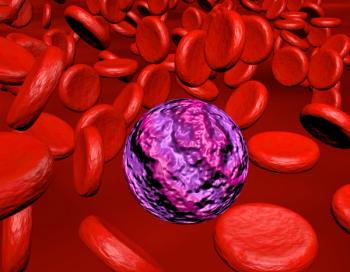
TKIs Associated With Subclinical Pulmonary Hypertension in CML Patients
Treatment of CML with tyrosine kinase inhibitors including imatinib, nilotinib, and dasatinib can be associated with subclinical pulmonary hypertension.
Treatment of chronic myeloid leukemia (CML) with tyrosine kinase inhibitors (TKIs) including imatinib, nilotinib, and dasatinib can be associated with subclinical pulmonary hypertension, according to a new study.
Previous research has found cases of pulmonary hypertension (PH), a potentially fatal complication, in CML patients treated specifically with dasatinib. However, some of the mechanistic effects of TKIs suggest that these agents could theoretically be effective in treating PH. Researchers led by Mariko Minami, MD, of Kyushu University Graduate School of Medical Sciences in Japan, used echocardiography on a cohort of patients receiving three different TKIs in an attempt to tease out those contradictory effects.
The study included 105 CML patients who received a TKI and were enrolled between 2014 and 2015. There were 37 patients in the imatinib group, 30 in the nilotinib group, and 38 in the dasatinib group; results were
The researchers measured mean tricuspid regurgitation peak gradient (TRPG), which reflects pulmonary arterial pressure. The imatinib patients had a mean TRPG of 22.7 mmHg, the nilotinib patients had a mean TRPG of 23.1 mmHg, and the dasatinib patients had a mean TRPG of 23.4 mmHg. These values were not significantly different; a subset of 9 patients who were newly diagnosed did have a lower mean TRPG of 19 mmHg, but this again did not reach significance (P = .38).
A TRPG above 31 mmHg suggests the presence of PH. Nine total patients presented with such a value, including one imatinib patient (2.7%), three nilotinib patients (10%), and five dasatinib patients (13.2%); this was not a significant difference. Three of the nine patients reported dyspnea, while the other six were asymptomatic.
Though the correlations were weak, there was a trend toward an increased risk of PH with increasing age in the nilotinib and dasatinib groups, and increasing treatment duration in the nilotinib group. There was a significant correlation between brain natriuretic peptide and TRPG (P = .0003), which is consistent with previous research.
“Our study demonstrated high TRPG values in CML patients not only with dasatinib treatment but also with imatinib and nilotinib, suggesting that subclinical PH might be more common than expected in patients treated with any TKIs,” the authors concluded. “Careful screening with echocardiography is necessary, especially for older patients who have received TKIs for a long time.”
Newsletter
Stay up to date on recent advances in the multidisciplinary approach to cancer.


















































































